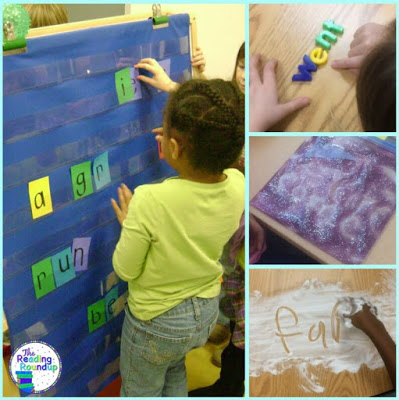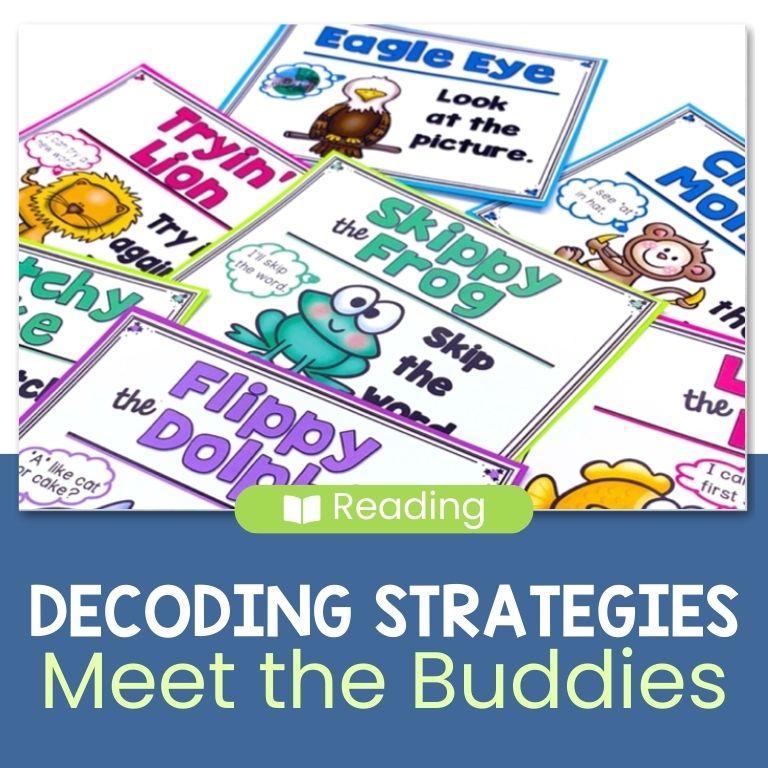
Dyslexia has been a hot topic in education lately. In fact, Virginia is now requiring teachers to complete dyslexia training when applying for licensure in order to make sure educators know how to meet these students’ needs. Hearing the word dyslexia can make some teachers nervous, but what they need to remember is that they are already implementing these strategies daily! Multisensory learning is beneficial for students with dyslexia to help activate multiple areas of the brain which helps these students make the necessary phonetic connections when working with words. These simple multisensory phonics strategies can help your students with dyslexia!
What is multisensory learning?
As the name implies, multisensory learning incorporates multiple senses at one time. So as a student is saying the sounds in a word they may also be tracing the letters with their fingers. Most lessons will not engage all five senses at once, but some might. You might also hear people refer to tactile (touch) or kinesthetic (movement) learning. These are other types of multisensory learning.
In order to reassure you that you DO already know how to help students with dyslexia, here are some simple multisensory phonics strategies that are beneficial for these students that you’re most likely already implementing!
This post includes affiliate links for which I may make a small commission at no extra cost to you should you make a purchase.
What tools can I use?
These are just a few suggestions. Be creative with other tools you can use!
- Shaving Cream
- Magnetic Letters
- Sidewalk Chalk
- Songs & Dances
- Gel Sensory Bags
- Play-Doh
- Sand / Sugar / Salt
- Air Writing
- Sandpaper Letters
- Pipe Cleaners
- Wikki Sticks
What strategies should I try with these tools?
Here are a few suggested multisensory phonics strategies you can implement with the tools mentioned above. The important thing is to make sure the students are verbalizing the sounds as they manipulate/write with the tools. This helps activate the different parts of the brain to strengthen the connections for the students.
- Practice writing letters
- Sight words writing practice
- Making word families
- Decoding unknown words
- Making Words

In the activity shown above, we were using Patricia Cunningham’s Making Words approach. Students are lead through steps to create new words by adding or deleting phonemes, manipulating letters to make words, and ultimately using all of the provided letters to make a mystery word. For example: Take 2 letters to make at. Add a letter to make cat. Instead of having students manipulate letter tiles I had them become the letters. This added a kinesthetic approach which helped make the phonics skills more concrete for them.
Need More Support?
Most likely you are already using many of these multisensory phonics strategies or just needed a quick reminder about them. But what about your students’ parents? I made a video series to explain and model various multisensory learning strategies. It is beneficial for parents and new teachers to view these strategies in action. Below is an example of one of these videos but a link is also provided to access the entire playlist of Multisensory Phonics Strategies videos.
What other multisensory phonics strategies do you use with your students? Which ones to you find to be the most effective? Comment below with the strategies you use!

Want to Pin this for later?










Great list of tools to use to engage students using multiple senses! That is so important to getting skills to stick with struggling readers.
Excellent tips and so easy to incorporate into the word study routine. Thanks Melissa!